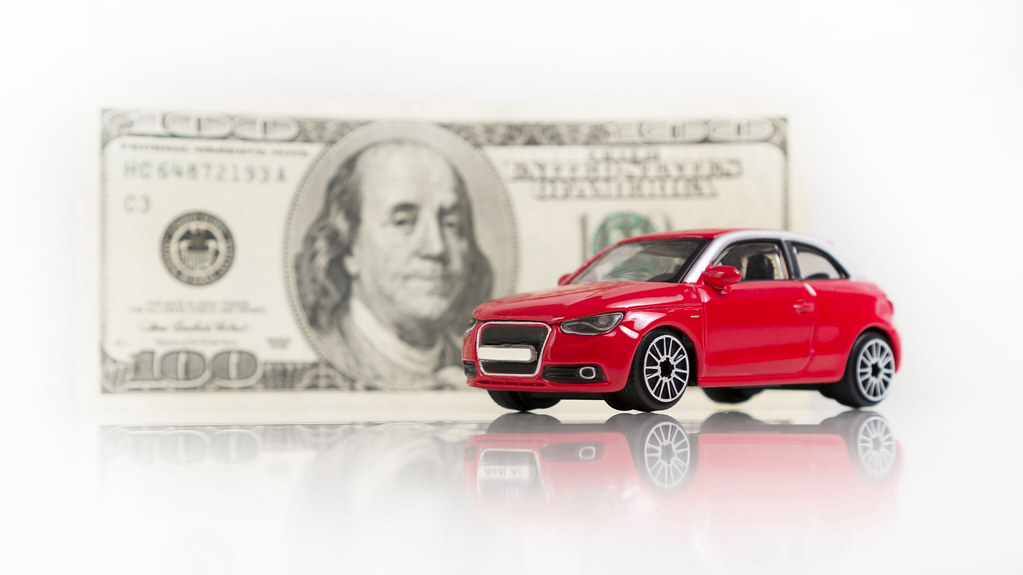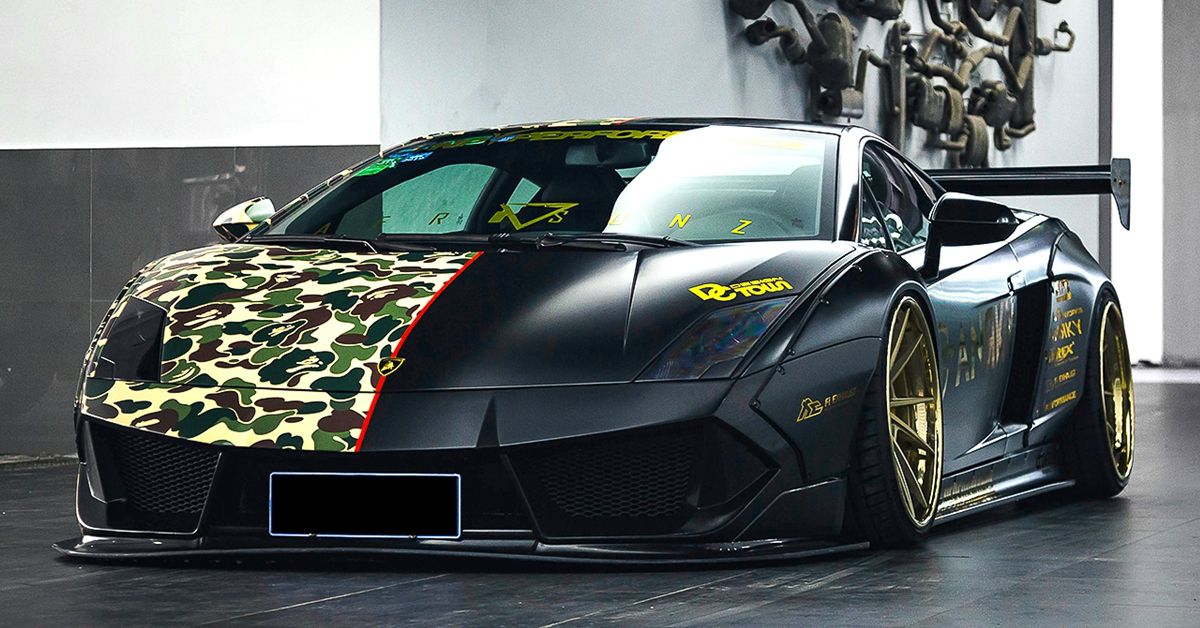
The 2000s were a wild time for SUVs. Remember when everyone *had* to have one? The bigger, the better, often. They weren’t just vehicles; they were statements, mobile living rooms, and the undisputed champions of the school run. But while some titans like the Escalade or Navigator cemented their legacies, a whole host of other contenders fought for supremacy, offering plush interiors and commanding road presence, only to slip into the annals of automotive history with nary a whisper. These weren’t just cars; they were symbols of an era, a reflection of changing desires and expanding families.
We’re talking about a period where platform sharing was an art form, sometimes leading to glorious diversification, other times to rather bewildering badge engineering. Manufacturers, eager to capture every conceivable slice of the burgeoning SUV pie, churned out models that catered to every niche, from rugged off-roaders to the supremely comfortable suburban cruisers we’re spotlighting today. These vehicles promised a blend of utility, luxury, and that quintessential ‘commanding view of the road’ that everyone seemed to crave.
So, buckle up, fellow gearheads and nostalgic suburbanites! We’re taking a deep dive, a proper Jalopnik-style excavation, into the automotive forgotten file to resurrect some of the absolute queens of comfort and suburbia from the aughts. These are the unsung heroes, the ones that perhaps didn’t achieve blockbuster status but left their mark on the driveways and shopping mall parking lots of an entire decade. You might even find yourself saying, “Oh yeah! I remember that one!” Let’s roll.
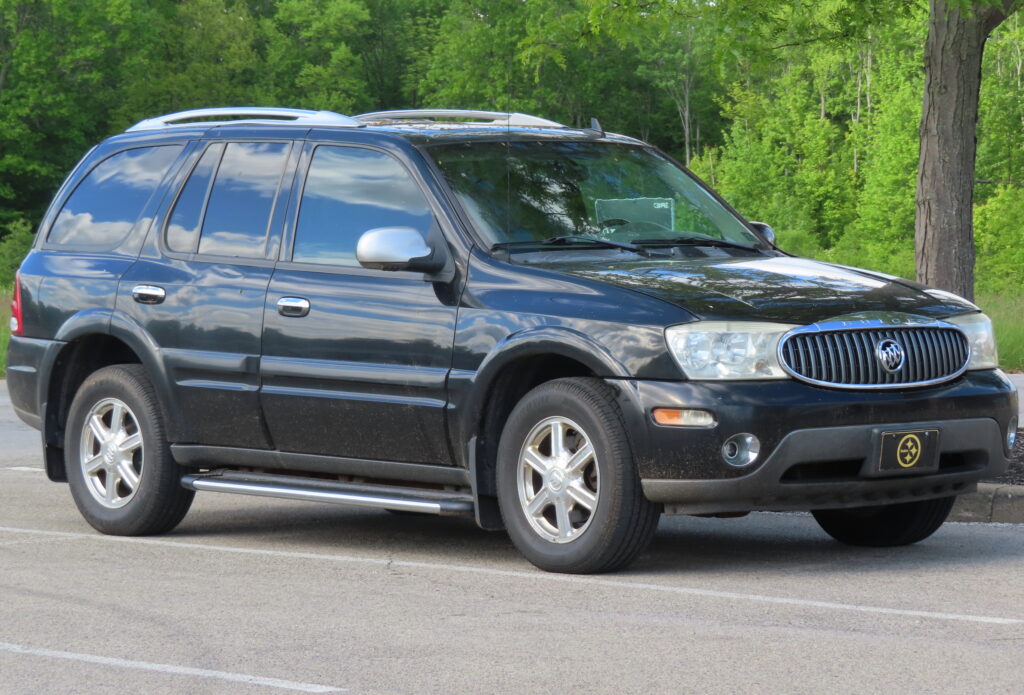
1. **Buick Rainier (2004-2007)**The Buick Rainier, a name that might elicit a faint “hmm, I think I’ve seen that” from even dedicated SUV enthusiasts, was GM’s attempt to inject a dose of luxury into its midsize SUV platform. Launched for the 2004 model year, it was part of a larger family of vehicles built on the GMT360 platform, a lineup notorious for its extensive badge engineering. While its siblings, the Chevrolet Trailblazer (the original) and GMC Envoy, were designed to be more mainstream, the Rainier was tasked with elevating the experience, offering Buick’s signature quietness and comfort to the SUV segment.
What truly set the Rainier apart, or at least *tried* to, were the subtle details in its presentation. While it shared the fundamental engines, transmissions, and chassis with its corporate cousins, Buick engineers and designers focused on refining the passenger experience. This meant a softer ride, a more insulated cabin, and an interior that aimed for a slightly more upscale ambiance, even if it often felt like a slightly polished version of its more utilitarian relatives. The calibration of its chassis, suspension, and steering was specifically tuned to deliver a smoother, less truck-like feel, prioritizing the comfort of its occupants over outright ruggedness or off-road prowess.
Under the hood, the Rainier typically came with a choice of a 4.2-liter inline-six or an optional 5.3-liter V8, both mated to a four-speed automatic transmission. The V8, with its ample torque, was particularly well-suited for suburban duties, effortlessly hauling families and their assorted gear, or towing a modest boat on weekend excursions. Its presence further solidified its luxury aspirations, even if the underlying platform was shared with more pedestrian models. This was an SUV designed for ease of use and effortless cruising, perfectly aligning with the “comfort and suburb” mandate.
The Rainier’s exterior design was also distinctively Buick, eschewing the more rugged aesthetics of its brethren for a rounder, more subdued silhouette. It featured Buick’s characteristic waterfall grille and refined trim, intended to appeal to a more mature and discerning buyer who valued understated elegance over aggressive styling. Despite these efforts to differentiate it, the market didn’t quite embrace the Rainier with the same fervor as other luxury SUVs. Its relatively short production run, ending in 2007, speaks to its limited impact, making it a truly forgotten gem for those who appreciate GM’s early 2000s cloning efforts.
Today, finding a Buick Rainier on the used market is like spotting a rare bird. They’re out there, lurking in the shadows of more popular models, offering a comfortable, if somewhat generic, slice of early 2000s American SUV luxury. For those in the know, however, it represents a unique chapter in GM’s history, a testament to a time when every brand needed an SUV, and comfort was king, even if the packaging was a familiar sight in a different wrapper. Its quiet demise makes it all the more intriguing to revisit now.
Car Model Information: 2005 Buick Rainier CXL
Name: Buick Rainier
Manufacturer: Buick
Production: July 2003–June 2007
ModelYears: 2004–2007
Assembly: Moraine Assembly in Moraine, Ohio, United States
Designer: Bill Davis
Class: Mid-size,Luxury car,SUV
Platform: GMT360
Related: Chevrolet TrailBlazer,Chevrolet SSR,GMC Envoy,Isuzu Ascender,Oldsmobile Bravada,Saab 9-7X
Layout: Front-engine, rear-wheel-drive layout,rear-wheel drive
Engine: ubl
Transmission: automatic transmission
Wheelbase: 113.0 in
Abbr: on
Length: 191.8 in
Width: 75.4 in
Height: 74.5 in
Predecessor: Oldsmobile Bravada
Successor: Buick Enclave
Categories: All-wheel-drive vehicles, Articles with short description, Buick vehicles, Cars discontinued in 2007, Cars introduced in 2003
Summary: The Buick Rainier is a mid-size upscale/luxury SUV that was manufactured by General Motors and marketed by Buick for the 2004 to 2007 model years. It was named after Mount Rainier, and with the Saab 9-7X served as the replacement for the Oldsmobile Bravada.
Get more information about: Buick Rainier
Buying a high-performing used car >>>
Brand: Buick Model: Rainier
Price: Not Priced Mileage: 198,205 mi.
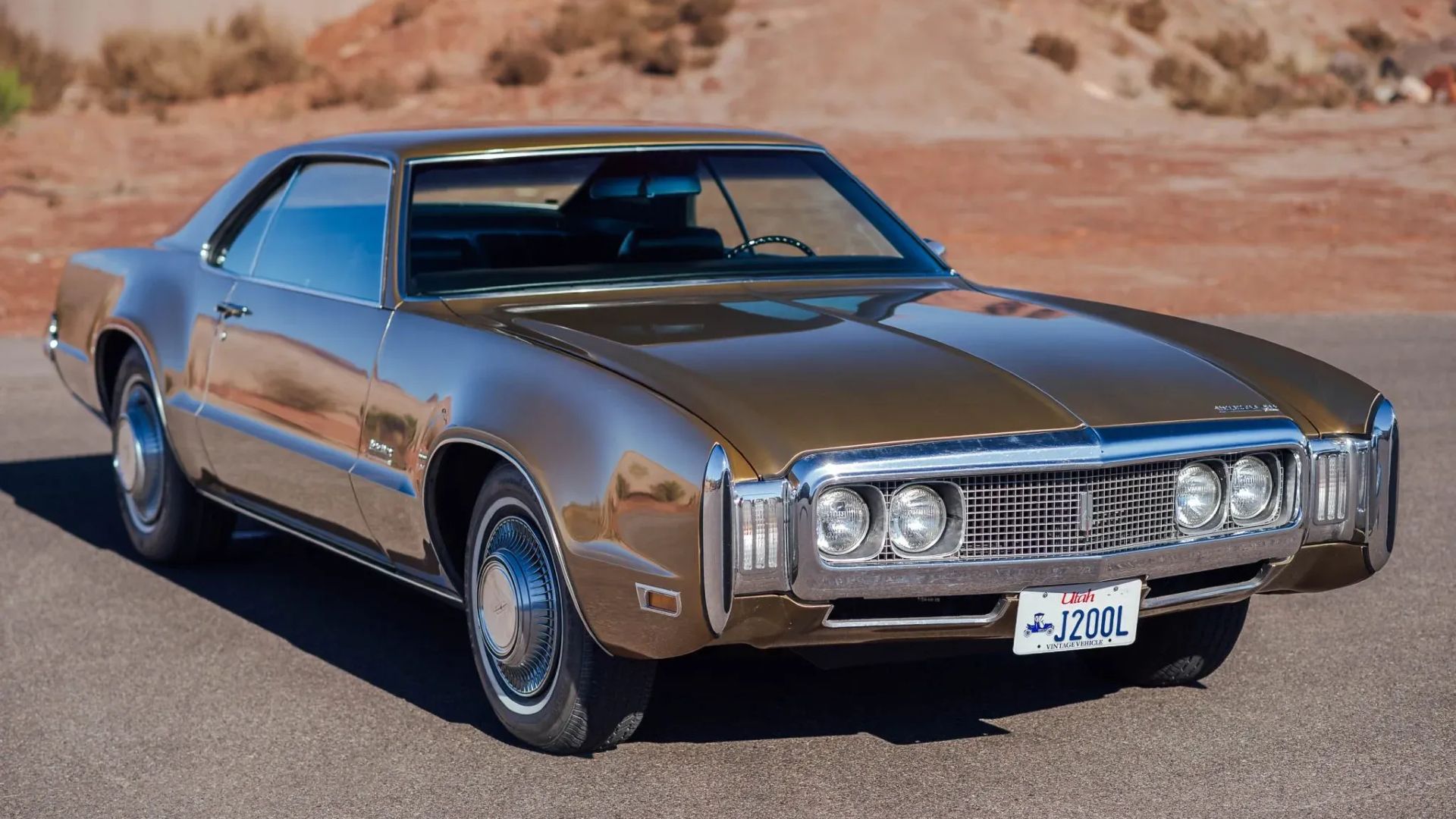
2. **Oldsmobile Bravada (2002-2004)**Before the Rainier tried to capture the hearts of suburban luxury seekers, there was the Oldsmobile Bravada, a name that evokes a slightly earlier, yet equally fascinating, era of GM’s platform-sharing strategy. The Bravada, particularly its third generation (2002-2004), was another iteration of the GMT360 midsize SUV, but with a distinct Oldsmobile flavor. Its very existence, coming right at the twilight of the Oldsmobile brand, adds a layer of melancholic nostalgia to its story, making it a compelling subject for our deep dive into forgotten ’00s comfort machines.
The Bravada, despite sharing its bones with the Chevrolet Trailblazer and GMC Envoy, carved out its own niche by focusing even more heavily on on-road refinement. While its platform partners often offered extended wheelbase (XL) variants for maximum cargo and passenger space, the Bravada defiantly stuck to the standard wheelbase. This decision underscored its mission: to be a more agile, sophisticated urban and highway cruiser rather than a stretched family hauler. It embraced a slightly less utilitarian persona, aiming for an executive-level comfort experience that resonated with Oldsmobile’s traditional clientele.
A key differentiator for the Bravada was its suspension setup. It featured a softer suspension calibration compared to its more rugged cousins, which translated into a smoother, more compliant ride—a hallmark of true comfort in the early 2000s. This made it particularly well-suited for highway driving, gliding over imperfections with an ease that belied its body-on-frame construction. The ride quality was specifically engineered to be less jarring, emphasizing passenger serenity over any pretense of off-road capability, making it a true “queen of comfort” for those long suburban commutes or cross-state journeys.
Aesthetically, the Bravada showcased Oldsmobile’s contemporary design language, which, while not revolutionary, certainly stood apart from its more mass-market siblings. It possessed a certain understated elegance, featuring distinctive grille designs and unique wheel options that lent it a more premium appearance. Inside, Oldsmobile aimed for a more luxurious feel, with higher-quality materials and a focus on creature comforts, attempting to distinguish itself in a crowded market where badge engineering was rampant. This was an SUV trying to retain a sense of identity for a brand on its last legs.
The Bravada’s brief third generation, ending just as Oldsmobile itself faded away, makes it a rare sight today. It represents a poignant chapter in automotive history, a final, valiant effort by a storied American brand to adapt to the changing tastes of the public. For those who appreciate the nuances of GM’s platform strategy and the pursuit of refined comfort, the Bravada stands as a curious, yet significant, artifact of the early 2000s, a comfortable, highway-tuned SUV that dared to be different, even if its time was tragically short.
Car Model Information: 2003 Oldsmobile Bravada 4dr AWD
Name: Oldsmobile Bravada
Manufacturer: General Motors
Production: 1990–2004
ModelYears: 1991–1994,1996–2004
Assembly: Moraine Assembly,Moraine, Ohio
Class: Executive car,sport utility vehicle
BodyStyle: sport utility vehicle
Transmission: Automatic transmission
Predecessor: Oldsmobile Custom Cruiser
Successor: Buick Rainier,Saab 9-7X
Categories: 1990s cars, 2000s cars, All-wheel-drive vehicles, All articles needing additional references, Articles needing additional references from February 2019
Summary: The Oldsmobile Bravada is a mid-size luxury SUV that was sold by Oldsmobile from 1991 to 2004. The only SUV ever marketed by Oldsmobile, the Bravada was the first GM light truck since 1924 offered outside of the Chevrolet and GMC brands. Introduced as the flagship GM mid-size SUV, the Bravada was also the highest-content GM SUV prior to the 1999 introduction of the GMC Yukon Denali and Cadillac Escalade.
Offered solely as a five-door wagon, the Bravada was a counterpart of the Chevrolet (S-10) Blazer and GMC Jimmy for its first two generations. For its third generation, the model line was derived from the Chevrolet TrailBlazer and GMC Envoy.
For its entire production, the Bravada was sourced by GM from its Moraine Assembly facility (Moraine, Ohio). Following the retirement of the Oldsmobile brand after 2004, the Bravada lived on for 4 more years, as GM redeveloped it as the Buick Rainier and the Saab 9-7X (becoming the first SUV for both brands).
Get more information about: Oldsmobile Bravada
Buying a high-performing used car >>>
Brand: Oldsmobile Model: Bravada
Price: $8,900 Mileage: 99,193 mi.
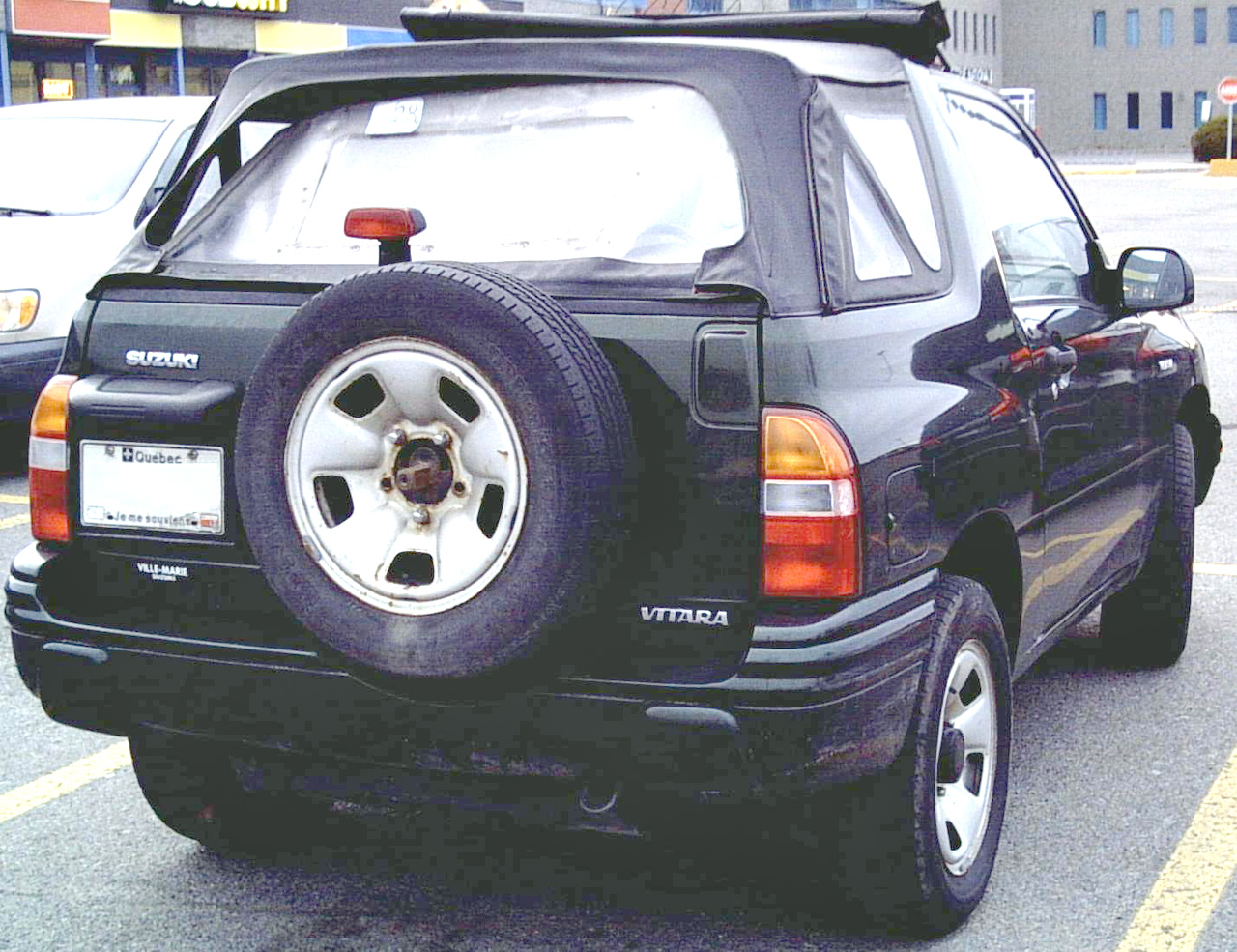
3. **Suzuki Vitara (1999-2004)**Now, let’s shift gears from the American-bred, badge-engineered behemoths to something with a slightly different flavor: the Suzuki Vitara. While many remember the larger, more refined third-generation Grand Vitara that graced Canadian roads until Suzuki stopped selling cars on our continent in 2014, it’s the second-generation Vitara (sold from 1999-2004) that truly deserves a spot in our forgotten hall of fame. This wasn’t just another compact SUV; it was a testament to Suzuki’s commitment to versatile, capable, and surprisingly comfortable vehicles, offering a distinct alternative to its larger, thirstier rivals.
The Vitara was essentially modeled after the more popular Chevrolet Tracker, a common collaboration between GM and Suzuki through their CAMI plant in Ingersoll, Ontario, where North American models were produced. This partnership allowed Suzuki to leverage a broader sales network while offering a vehicle that retained its core brand identity of robust reliability and nimble handling. Unlike the pure luxury barges, the Vitara blended capability with comfort, positioning itself as a practical yet enjoyable vehicle for both urban dwellers and those who ventured off the beaten path occasionally.
What made the Vitara a standout in its segment was its remarkable versatility. It offered both two- and four-door body styles, catering to different lifestyle needs—the two-door being a sportier, more compact option, and the four-door providing essential practicality for families. Furthermore, the powertrain options were equally diverse, featuring both four- and six-cylinder engines, the latter developing 165 horsepower. This provided a surprising amount of grunt for its size, ensuring smooth acceleration and comfortable cruising on highways, making it feel “best-suited” for varied driving conditions.
And let’s not forget the soft-top variant! This was a truly unique offering that brought a sense of adventure and open-air fun to the compact SUV market. Imagine cruising down a coastal highway, sun on your face, in an SUV that was equally at home navigating city streets or tackling light trails. This feature alone cemented its appeal to a younger, more adventurous demographic, offering a blend of utility and recreational enjoyment that many larger, more sedate luxury SUVs simply couldn’t match. It provided a different kind of “comfort”—the comfort of freedom and versatility.
The Suzuki Vitara, in its second generation, might not have been a direct competitor to the plush American luxury SUVs in terms of sheer opulence, but it offered a robust, versatile, and surprisingly comfortable package that defined a different facet of suburban living in the 2000s. Its production in Canada, its diverse configurations, and its adventurous spirit make it a fascinating and often overlooked player from an era obsessed with SUVs. It proved that comfort didn’t always mean massive size; sometimes, it meant thoughtful design and functional adaptability.
Car Model Information: 2001 Suzuki Vitara JLS
Name: Suzuki Vitara
Manufacturer: Suzuki
Aka: Suzuki Escudo
Production: 1988–present
Class: ubl
Layout: ubl
Categories: 1990s cars, 2000s cars, 2010s cars, 2020s cars, ANCAP superminis
Summary: The Suzuki Vitara is a series of SUVs produced by Suzuki in five generations since 1988. The second and third generation were known as the Suzuki Grand Vitara, while the fourth generation eschewed the “Grand” prefix. In Japan and a number of other markets, all generations have used the name Suzuki Escudo (Japanese: スズキ・エスクード, Hepburn: Suzuki Esukūdo).
The choice of the name “Vitara” was inspired by the Latin word vita, as in the English word vitality. “Escudo”, the name primarily used in the Japanese market, refers to the “escudo”, the monetary unit of Portugal before adoption of the Euro. The original series was designed to fill the slot above the Suzuki Jimny. The first generation was known as Suzuki Sidekick in the United States. The North American version was produced as a joint venture between Suzuki and General Motors known as CAMI. It was also sold as the Santana 300 and 350 in Spain and in the Japanese market, and in select markets was rebadged as the Mazda Proceed Levante as well.
The second generation was launched in 1998 under the “Grand Vitara” badge in most markets. It was accompanied by a still larger SUV known as the Suzuki XL-7 (known as Grand Escudo in Japan). The third generation was launched in 2005.
The fourth generation, released in 2015, reverted to the original name “Vitara” in most markets, but shifted from an off-road SUV towards a more road-oriented crossover style. It shares the platform and many components with the slightly larger SX4 S-Cross.
The model introduced in 2022 for the Indian market only reuses the “Grand Vitara” nameplate. It is slightly larger than the SX4 S-Cross.
Get more information about: Suzuki Vitara
Buying a high-performing used car >>>
Brand: Suzuki Model: Vitara
Price: $7,900 Mileage: 35,130 mi.
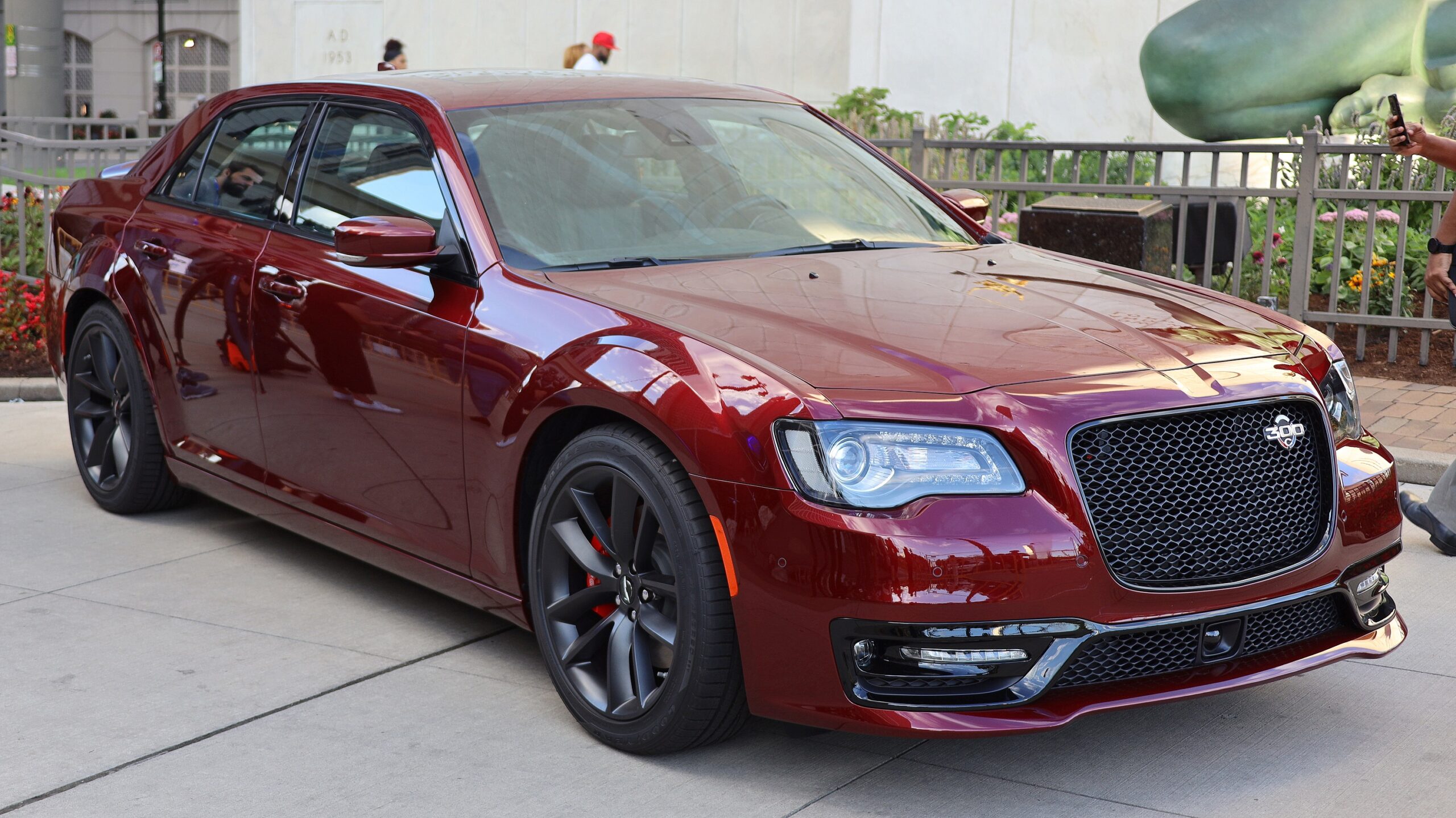
4. **Chrysler Aspen (2007-2009)**Rounding out our initial quartet of forgotten ’00s SUV royalty is the Chrysler Aspen, a vehicle whose life was as fleeting as it was ambitious. Lasting only three short years, from 2007 to 2009, the Aspen was Chrysler’s full-sized entry into the increasingly competitive luxury SUV market. It was, in essence, a clone of the second-generation Dodge Durango, but dressed in Chrysler’s finest attire, aiming to capture a more upscale clientele with its refined aesthetics and enhanced features. Its brevity makes it a genuine rarity, a ghost in the machine of early 21st-century American motoring.
Chrysler’s strategy with the Aspen was clear: take a proven, robust platform and imbue it with a sense of sophistication and grandeur. The Aspen was designed to be more luxurious and better equipped than its Dodge sibling. This meant a distinct front fascia, adorned with Chrysler’s prominent winged badge and a chrome-laden grille, as well as unique rear styling that conveyed a sense of premium presence. The exterior styling was deliberately crafted to be “classier looks,” offering a visual upgrade that promised a more refined experience even before stepping inside.
Inside, the Aspen truly aimed for the “absolute queens of comfort” title. Chrysler engineers focused on creating a plush, spacious cabin with seating for up to eight passengers. High-quality materials, often including leather upholstery and woodgrain accents, were standard or available, elevating the perceived luxury. Features like a DVD entertainment system, navigation, and premium audio were all part of the package, catering directly to the desires of suburban families who sought a mobile sanctuary for long journeys and daily errands alike. This was about providing an experience, not just transportation.
Under the hood, the Aspen offered compelling power options, including a formidable 335-hp 5.7-liter HEMI V8 engine, paired with a five-speed automatic transmission. This powertrain provided abundant power for acceleration, towing, and cruising, ensuring that the Aspen felt authoritative and effortless on the road. The HEMI V8 was a statement in itself, promising robust performance that matched its luxurious aspirations, cementing its place as a powerful contender in the large SUV segment, even if its reign was tragically brief.
The short-lived existence of the Chrysler Aspen is a fascinating case study in automotive marketing and product planning. Despite its luxurious appointments, powerful HEMI engine, and comfortable interior, it struggled to find its footing in a market saturated with established rivals. Today, spotting an Aspen is a rare treat for enthusiasts, a fleeting glimpse of Chrysler’s attempt to carve out a distinct luxury SUV identity. It stands as a testament to the fact that even with a strong platform and premium intentions, timing and market perception can dictate the fate of a potentially “best” vehicle, leaving it largely forgotten by the collective memory.
Now that we’ve unearthed some of the more niche, yet equally intriguing, players from the ’00s SUV scene, it’s time to pull back the curtain on the grand strategy of General Motors’ platform sharing. You see, while we praised the likes of the Rainier and Bravada for their unique spins on a familiar recipe, they weren’t concocted in a vacuum. They were, in fact, integral parts of a larger family, sharing the very DNA that underpinned some of the most ubiquitous SUVs of the era. This segment is all about understanding that common lineage and appreciating the subtle, yet sometimes significant, ways GM tried to differentiate its siblings, creating a diverse buffet of comfort for every suburban palate.
General Motors, bless their hearts, had a particular affection for cloning vehicles back in the day, a practice we’re all pretty familiar with. It was an era where economy of scale was king, and a robust platform could be stretched and re-skinned to serve multiple brands, each aiming for its own slice of the SUV pie. The GMT360 platform, in particular, was the prolific parent of a whole host of midsize SUVs, including some we’ve already discussed and others that are about to take center stage. This wasn’t just about slapping a different badge on the same sheet metal; it was a complex dance of engineering tweaks and marketing maneuvers designed to create distinct identities from a shared foundation.
The genius, and sometimes the folly, of this approach lay in the ‘subtle details’ and the ‘calibration of the chassis, suspension, and steering.’ These weren’t earth-shattering differences to the casual observer, perhaps, but to the keen eye (and the discerning posterior), they were meant to tailor the driving experience, the feel of the road, and the overall ambiance to suit specific brand promises. It’s this intricate web of shared components and deliberate differentiation that makes these next three contenders so fascinating—they were all siblings, yes, but each had its own personality, its own suburban domain, and its own place in the pantheon of ’00s comfort machines.
Read more about: Chrysler’s Timeless Treasures: Iconic Models Primed for a Modern Comeback in an Electrified Era

5. **Chevrolet Trailblazer (the original)**Ah, the Chevrolet Trailblazer. If the Buick Rainier was the polished executive and the Oldsmobile Bravada the refined urbanite, the original Trailblazer was the quintessential mainstream monarch of the mid-2000s SUV landscape. It wasn’t trying to be an understated luxury statement or a European anomaly; it was simply *the* Chevrolet midsize SUV, designed to be everything a growing American family needed and nothing they didn’t. This was the workhorse, the reliable friend, and the undeniable anchor of the GMT360 platform, upon which many of its more specialized siblings were built.
As the foundational model, the Trailblazer proudly shared its robust engines, solid transmissions, and sturdy chassis with its platform mates. It was the blueprint, if you will, for a successful midsize SUV in an era obsessed with them. While its interior might have leaned more towards practicality than outright opulence, it still offered a level of comfort and space that endeared it to countless suburban households. This was a vehicle built for school runs, trips to the big box store, and the occasional weekend camping adventure, all while keeping its occupants pleasantly cocooned from the rigors of the road.
What truly made the Trailblazer a ‘queen of comfort’ in its own right was its sheer competence and widespread appeal. It delivered a smooth, predictable ride, thanks in part to the shared chassis and suspension, but tuned for a broad audience. It wasn’t about specialized luxury; it was about accessible, dependable comfort. For many, the Trailblazer represented the sweet spot: big enough to handle family duties, capable enough for light utility, and comfortable enough to make even the longest commutes feel a little less taxing. It truly defined the mainstream interpretation of SUV comfort for an entire generation.
Its lasting legacy, beyond just being a strong seller, lies in how it proved the versatility of the GMT360 platform. By establishing such a solid, well-regarded base, Chevrolet paved the way for its corporate cousins to venture into different market segments, each attempting to layer their brand’s unique identity onto this proven chassis. The Trailblazer was the bedrock, the comfortable constant in a world of ever-diversifying SUV options, a familiar and reassuring presence on virtually every street in suburbia.
Car Model Information: 2000 Chevrolet Blazer TrailBlazer
Name: Chevrolet Trailblazer/TrailBlazer
Manufacturer: Chevrolet
Production: unbulleted list
Class: Mid-size car,Sport utility vehicle
BodyStyle: 5-door SUV
Layout: unbulleted list
Predecessor: Chevrolet S-10 Blazer
Categories: 2010s cars, 2020s cars, All-wheel-drive vehicles, All Wikipedia articles in need of updating, All articles needing additional references
Summary: The Chevrolet TrailBlazer (also known as Trailblazer) is a mid-size SUV produced by Chevrolet, a division of General Motors. The nameplate was first used in North America from 2001 to 2008; in 2009, it was replaced by the Traverse, as a crossover SUV. In 2011, production of a newly redesigned version of the Trailblazer for the Asian and Brazilian markets began.
Get more information about: Chevrolet TrailBlazer (SUV)
Buying a high-performing used car >>>
Brand: Chevrolet Model: Trailblazer
Price: $3,997 Mileage: 146,344 mi.

6. **GMC Envoy**Stepping up slightly from the mainstream Trailblazer, we encounter the GMC Envoy, the midsize SUV that deftly navigated the space between mass-market appeal and near-luxury aspirations. While undeniably a close sibling to the Trailblazer, sharing those fundamental engines, transmissions, and the robust GMT360 chassis, the Envoy positioned itself as a more professional, more refined option. It was for the buyer who appreciated the core competencies of the platform but desired a bit more polish, a touch more gravitas, in their suburban cruiser.
The differentiation for the Envoy, as with its other platform mates, came down to those ‘subtle details’ and the specific ‘calibration of the chassis, suspension and steering.’ GMC engineers tuned the Envoy to offer a ride that was often perceived as a smidgen smoother, a tad more composed than its Chevrolet counterpart. The interior might feature slightly more upscale materials or unique trim, providing an ambiance that felt just a step above without venturing into the full-blown luxury territory of Buick. It was a calculated move to capture a more discerning, yet still value-conscious, customer.
For the ’00s suburbanite, the Envoy offered a compelling proposition. It delivered all the utility and family-hauling prowess expected of a midsize SUV, but with a more sophisticated demeanor. The comfort was still paramount, ensuring that long drives were relaxing and daily errands were handled with ease. It wasn’t about being flashy; it was about projecting an image of quiet capability and refined taste, making it an ideal companion for the upwardly mobile family who appreciated understated quality.
The Envoy’s role in GM’s multi-brand strategy was crucial: it demonstrated how the same underlying platform could be adapted to serve slightly different market segments without requiring a complete redesign. It represented the intelligent application of badge engineering, where genuine effort was made to distinguish the product beyond just the grille. This made the Envoy a strong contender in the comfort and suburbia stakes, a choice for those who wanted familiarity with a touch more flair, solidifying its place as a thoughtful iteration of a popular formula.
Car Model Information: 2007 GMC Envoy Denali
Name: GMC Envoy
Class: Mid-size,Sport utility vehicle
Layout: Front engine, rear-wheel drive / four-wheel drive
BodyStyle: SUV
Predecessor: Chevrolet S-10 Blazer
Production: 1997–2008
ModelYears: 1998–2009
Manufacturer: General Motors
Successor: GMC Terrain,GMC Acadia
Categories: All-wheel-drive vehicles, All articles needing additional references, Articles needing additional references from February 2019, Articles with short description, Cars discontinued in 2009
Summary: The GMC Envoy is a mid-size SUV manufactured and marketed by General Motors for the 1998 to 2009 model years over two generations. Adopting a nameplate used by GM Canada, the Envoy was phased in as a trim variant of the GMC Jimmy alongside the similar Chevrolet TrailBlazer.
The second generation of the GMC Envoy replaced the Jimmy outright, again sharing a common platform with the Trailblazer; General Motors also marketed the chassis architecture under various other nameplates, including the Oldsmobile Bravada, Buick Rainier, Isuzu Ascender, and Saab 9-7X.
General Motors assembled the model line at its Moraine Assembly (Moraine, Ohio) and Oklahoma City Assembly (Oklahoma City, Oklahoma). Both facilities were closed by 2008, leading to the discontinuation of the model line. The Envoy was not directly replaced in the GMC model line as General Motors transitioned its smaller SUVs to unibody-chassis designs, introducing the smaller GMC Terrain and larger GMC Acadia.
Get more information about: GMC Envoy
Buying a high-performing used car >>>
Brand: GMC Model: Envoy
Price: $10,000 Mileage: 113,315 mi.
Read more about: More Than Just Rust: 14 SUVs That Were Once Desirable, Now Sadly Dated – A Deep Dive for Enthusiasts

7. **Saab 9-7x**And now for something completely different, yet entirely familiar: the Saab 9-7x. This vehicle is perhaps the most fascinating, and certainly the most idiosyncratic, member of the GMT360 family. For those of us who appreciate automotive oddities, the 9-7x is a masterclass in brand integration, or perhaps, brand struggle. Here was a Swedish marque, renowned for its quirky individualism, aeronautical heritage, and turbocharged engines, forced to adapt a distinctly American, body-on-frame SUV platform. The result was a ‘close relative’ that tried desperately to wear the crown of comfort and quirkiness in suburbia.
The challenge for the Saab 9-7x was immense. How do you inject Saab’s unique design ethos and driving dynamics into a vehicle that, at its core, was sharing engines, transmissions, and chassis with the decidedly non-Saab Trailblazer and Envoy? The answer lay in the ‘subtle details,’ but here, those details had to work overtime. Saab designers did their best to apply the brand’s minimalist aesthetic to the interior, with a unique dashboard and classic Saab features like the ignition key placement between the seats. The exterior received a distinctly Saab-ish grille and lighting treatment, a valiant effort to Swedish-ify an American truck.
The ‘calibration of the chassis, suspension and steering’ was arguably where the 9-7x truly attempted to earn its Saab badge. Engineers likely aimed for a firmer, more European-tuned ride than its GM siblings, hoping to deliver a driving experience that was a bit more engaging and less floaty. While still a comfort-oriented SUV for the suburbs, this tuning would have been an attempt to appeal to Saab loyalists who desired that specific driving feel, even when translated to a larger, heavier platform. It was an SUV for the intellectual, or at least the one who *thought* they were.
Ultimately, the Saab 9-7x was a product of its time, a bold, if somewhat incongruous, attempt to merge two disparate automotive philosophies. It offered a unique blend of American utility and a veneer of Scandinavian sophistication, making it a truly distinct option for the ’00s suburban landscape. For a select few, it delivered a kind of comfort that went beyond mere plushness – the comfort of driving something undeniably different, something that whispered ‘Saab’ even if its heart beat with a General Motors rhythm. It’s a compelling testament to the era of platform sharing, and a wonderfully quirky ‘queen’ in its own right.
Car Model Information: 2009 Saab 9-7X 4.2i
Name: Saab 9-7X
Manufacturer: General Motors
Production: 2004–2008
ModelYears: 2005–2009
Assembly: Moraine, Ohio
Class: Mid-size car,Sport utility vehicle
BodyStyle: SUV
Platform: GMT360
Related: Buick Rainier,Chevrolet TrailBlazer,GMC Envoy,Oldsmobile Bravada,Isuzu Ascender,Chevrolet SSR
Layout: Front-engine, four-wheel-drive layout,all-wheel drive
Engine: GM LS engine#LS2,V8 engine
Transmission: automatic transmission,GM 4L60-E transmission#4L60-E
Wheelbase: 113.0 in
Abbr: on
Length: 193.2 in
Width: 75.5 in
Height: 68.5 in
Predecessor: Oldsmobile Bravada
Successor: Saab 9-4X
Categories: All-wheel-drive vehicles, All articles lacking in-text citations, Articles lacking in-text citations from March 2021, Articles with short description, Cars discontinued in 2008
Summary: The Saab 9-7X is a mid-size luxury SUV that was manufactured by General Motors for the American market and marketed under the Saab marque, then owned by GM. The 9-7X was first presented at the 2004 New York International Auto Show, and was available starting with the 2005 model year, as a replacement for the Oldsmobile Bravada.
Get more information about: Saab 9-7X
Buying a high-performing used car >>>
Brand: Saab Model: 9-7x
Price: $5,995 Mileage: 113,634 mi.
Read more about: More Than Just Rust: 14 SUVs That Were Once Desirable, Now Sadly Dated – A Deep Dive for Enthusiasts
So there you have it, a deeper dive into the glorious, sometimes bewildering, world of 2000s SUVs. From the largely forgotten niche players to the ubiquitous workhorses and the curious cross-brand experiments, this era truly delivered a diverse array of comfortable cruisers for the ever-expanding suburbs. These vehicles, with their shared DNA and subtly tweaked personalities, represent a fascinating chapter in automotive history, a testament to a time when everyone wanted an SUV, and manufacturers were more than happy to oblige, in myriad forms. While some have faded into obscurity, their impact on the asphalt and driveways of the aughts is undeniable. They truly were the absolute queens of comfort, each in their own special way, carving out their legacies one school drop-off and grocery run at a time.

